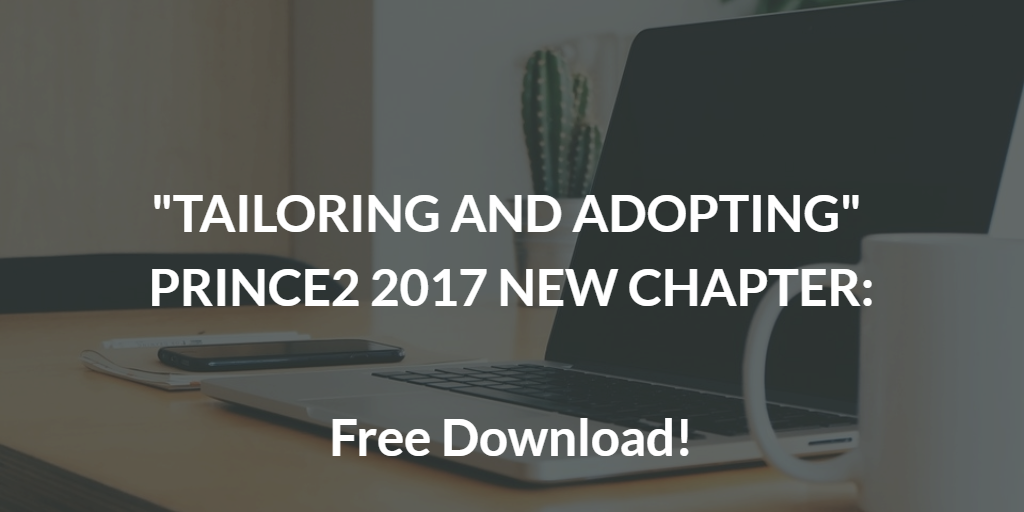News
View the latest inspiring and positive news and information about what's going on in the PM and IT world.

Date: 12/06/2017
PRINCE2 is firmly established as the world’s most practiced method for project management and is globally recognized for delivering successful projects. In January 2017 AXELOS, announced the upcoming arrival of updated PRINCE2 guidance and Foundation and Practitioner examinations.
Together, these form PRINCE2 2017 and represent the first major update to PRINCE2 since 2009.
TITLE OF THE WEBINAR: What is the PRINCE2 2017 Update? All You Need to Know
ABOUT THE EXPERT: David Maegerman has over 10 years of Project Management experience, performing various roles in different types of projects. As a Project Manager, he delivered IT solutions as well as sales/marketing projects in the distribution and insurance industry. He’s a multilingual trainer for PRINCE2 and Agile Project Management, able to perform courses in English, Dutch and French.
ABOUT THE WEBINAR: With this informative webinar QRP International wants to introduce you to the changes, understanding not only what changes in the content, but also what are the main reasons for the update, and how these updates will impact (or not impact) on your actual certification, and/or training plans.
To WATCH THE VIDEO follow this link!
Read more

Date: 30/05/2017
The new Managing Successful Projects with PRINCE2 official manual has just came out (on May 18th) and is now available to be ordered (follow this link to get our copy).
But Axelos decided to trigger your curiosity even more by allowing the FREE download of the "Content summary" of the 2017 version of the PRINCE2 manual and furthermore the download of the Chapter 4 "Tailoring and adopting PRINCE2", the NEW chapter that promises to make PRINCE2 even more scalable and flexible.
As stated in the chapter itself:
"The tailoring guidance provided in this manual is not exhaustive, as the application of PRINCE2 is limitless. This guidance is provided to illustrate things to consider ad some example tactics that can be applied".
CHAPTER 4: TAILORING AND ADOPTING PRINCE2
The fourth chapter of the official PRINCE2 2017 manual has the goal to show how to use the inherent flexibility of PRINCE2 to tailor it for any project and build an organizational PRINCE2-based project management method. This chapter includes situations that the project manager may encounter.
In fact, the chapter that is now available for download includes:
Read more
- what you can and cannot tailor
- who is responsible for tailoring and documenting
- examples of different project environments
- tailoring and embedding PRINCE2 in an organization
- PRINCE2 in simple projects
- PRINCE2 in projects using an Agile approach
- PRINCE2 in projects involving a commercial customer and supplier relationship
- PRINCE2 in projects involving multiple owning organizations
- PRINCE2 in projects within programmes

Date: 15/05/2017
Direct community feedback from practitioners, trainers and consultants made it clear that an evolutionary update was requested, that responds to higher expectations of stakeholders in today’s working environment. The 2017 update of PRINCE2, that will come out in July 2017, builds on the proven strength of PRINCE2 while responding to current imperatives for flexibility and agility.
Together with new Foundation and Practitioner exams, that highlight the core and the practical application, the 2017 PRINCE2 update provides practical, accessible and authoritative guidance for anyone managing a project.
TITLE: PRINCE2 2017 update: more practical, flexible and scalable
ABOUT THE ARTICLE: This article explains clearly what has changed and what did not change in this updated version of PRINCE2. The 2017 update of PRINCE2 builds, in fact, on the proven strength of PRINCE2 while responding to current imperatives for flexibility and agility. You will discover how the core of the PRINCE2 method, like principles, processes and themes remain unchanged, while a renewed focus on the importance of tailoring has been added: the chapter on tailoring has been, in fact, elaborated and more prominently placed at the beginning of the manual. Furthermore, the distinction between tailoring, adopting and embedding is explained in more detail and there is guidance on how to adopt and embed PRINCE2 in an organization.
ABOUT THE AUTHOR: Mr. Niels Van Bemmelen is “Organisational Change Management Specialist”. Niels has 20 years of experience in projects and programmes for organisational change. He has been involved in complete business change projects in challenging international environments. As project manager, business analyst and in assurance roles Niels has worked in projects in finance, public sector, tourism and education. He is a multilingual accredited trainer and consultants for PRINCE2, MSP, MoP, P3O, PRINCE2 Agile and Change Management and he teaches in English, Dutch and Italian.
TO READ AND DOWNLOAD THE FULL ARTICLE: simply follow this link!
ON THE SAME TOPIC:
Read more

Date: 15/05/2017
The 2017 updated version of PRINCE2 has been developed closely with the PRINCE2 community worldwide and taking into considerations several drivers for change. One of the most urgent one is the increased professionalism within the PM community: project management will be more and more considered a wide business skill and this will, as a consequence, require a continuous improvement from every PM working in the field.
But what changes in the certification scheme? Does the validity of the Practitioner certification remain the same? What is the Membership Programme? Keep reading the article to have the answers to these and more questions!
TITLE: PRINCE2 2017 Update: NEWS for Practitioner and PRINCE2 Membership
ABOUT THE ARTICLE: With this article we explore how the 2017 version of PRINCE2 will change the certification scheme, and how these changes may impact (or not) on your current certification. We want to explain in clear and easy way:
Read more
- How to remain current with your PRINCE2 certification;
- What are the changes to the PRINCE2 Practitioner validity;
- How to remain up-to-date with the NEW Membership Programme;
- What are the CPD points and how to obtain them.

Date: 02/05/2017
If we see Project Management through the lens of the so called “big picture”, projects are the tools a company possesses to realize its strategy: from projects, all the way up to portfolio, projects are the concrete and practical results of where the organization decides to invest its money.
This should make clear why project management is getting more and more importance in the business world.
Over the last few years there has been an increasing interest in the analysis of how the future of Project Managers will look like. There are many reports and researches on the topic, and the most recent one is surely the “The Future Project Management Professional” from Axelos. This report identifies the key trends that will most impact the project, programme and portfolio management profession, as well as the technical and interpersonal skills that will be required.
Keep reading to find out how the changes in the Project Management world have played an important role into the PRINCE2 2017 version: new article available for download!
TITLE: What’s the future for Project Management? Understanding PRINCE2 2017 Version
ABOUT THE ARTICLE: This article from QRP International has the goal to explain what's the general status within Project Management world, and how the changes in this environment have helped raise the need for an updated version to PRINCE2. By analyzing the latest report in Project Management, the “The Future Project Management Professional” from Axelos, the article examines the 4 main aspects of change for the profession of Project Manager, and highlights how these changes have a great impact on a well-known and internationally recognized certification like PRINCE2. The article also mentions the main areas where PRINCE2 has been updated.
TO READ AND DOWNLOAD THE FULL ARTICLE: simply follow this link!
Read more

Date: 02/05/2017
PRINCE2 is firmly established as the world’s most practiced method for project management and is globally recognized for delivering successful projects.
The updated 2017 guidance, its first since 2009, places a strong emphasis on the scalability and flexibility of the method and on how best to tailor it to the complexity and specific requirements of a project.
Read more
KEY UPDATES
- Increased emphasis on tailoring PRINCE2 to the needs of organizations and a varied range of project environments
- Demonstrates a greater link between the themes and principles
- Restructuring of the ‘Themes’ chapters to accommodate typical examples of tailoring
- Provides increased guidance on the practical application of the method, with numerous examples, hint and tips
- Improvements to the structure and format have been made throughout the manual to en-sure it is easier to navigate and use
- The updated guidance and exams has been developed through a collaborative approach involving over 100 members of the broader development team, including practitioners, trainers and consultants
- PRINCE2’s familiar structure of seven principles, themes and processes have remained constant.







